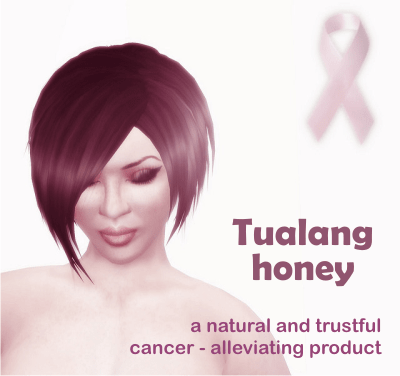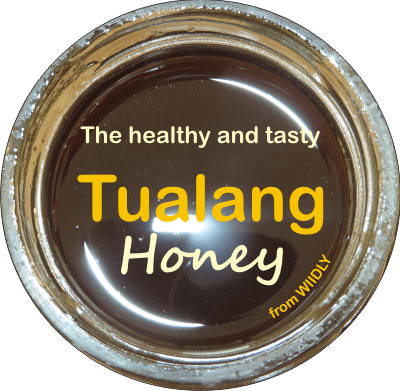Honey benefits for health are well-known today, especially those of manuka honey’s. But only a few of us have heard, for example, of tualang honey, which has exceptional health benefits for our health.
The School of Medical Sciences, Universiti Sains Malaysia, has researched tualang honey the most. Its studies have been published by The Malaysian Journal of Medical Sciences. In May 2013, they published the “Review of the Medicinal Effects of Tualang Honey and a Comparison with Manuka Honey”.
Although the health benefits of Manuka honey are internationally recognized those of TH are only recently attracting attention. More laboratory research and clinical trials are needed to develop a better understanding of its potential health benefits and to abate scepticism.
![]() Here are the main benefits of tualang honey as researched by Universiti Sains Malaysia, as it is the first to research this honey.
Here are the main benefits of tualang honey as researched by Universiti Sains Malaysia, as it is the first to research this honey.
Has antibacterial activity
Any honey has antimicrobial effects. They are attributed to the osmotic effect of the substance’s sugars, its pH, particularly its peroxidase activity, but also due to the presence of non peroxidase substances such as phenolic acids, flavonoids, and lysozymes.
Tualang honey has both bactericidal and bacteriostatic properties against a range of bacteria, including common bacteria on the skin. At concentrations of 6.25–25%, tualang honey inhibits the growth of several bacterial strains, such as Streptococcus pyogenes, Salmonella typhi, Staphylococcus aureus, coagulase-negative Streptococcus spp., and Escherichia coli.
Tualang honey is as effective as Manuka honey against several bacterial strains:
As a conclusion tualang honey seems to be more effective than manuka honey against some gram-negative bacterial strains in burn wounds, due to its higher content of phenolics, flavanoids, and HMF. Tualang honey reduces the growth of wounds infected with Pseudomonas aeruginosa, Acinetobacter baumanii or Klebsiella pneumonia, with one study reporting superior healing with a honey dressing than with conventional silver and aquacel dressings. These bacteria are a common cause of hospital infections.
Has antioxidant activity
Any honey contains elements that gives its antioxidant activity: flavonoids, phenolic acids, amino acids, proteins, and some enzymes.
Tualang honey’s antioxidant activity is similar (even higher) to the ones in manuka honey, Slovenian honey and some other honeys.
In combination with glibenclamide and metformin (and even alone), tualong honey protects against oxidative stress in streptozotocin-induced diabetic rats. It has a higher level of antioxidant activity than other local Malaysian honeys, such as Gelam, Indian forest, and pineapple honeys.
Based on a study of nine different Malaysian honeys from different origins (using Manuka honey as gold standard), tualang honey has more free-radical scavenging and antioxidant activity than other local and commercially available honeys). This was attributed to its high content of phenolics and flavonoids.
Another study was made on rats showed the antioxidant protection of Malaysian tualang honey in the pancreas of normal and streptozotocin-induced diabetic rats.
Has anti-inflammatory activity
NCBI published a study made by the Department of Dermatology and Skin Diseases Research Center, Veterans Affairs Medical Center, Birmingham, AL, USA: “Tualang honey protects keratinocytes from ultraviolet radiation-induced inflammation and DNA damage.”
Has antidiabetic activity
There are still people believing that honey is not good for diabetics, because its high content of sugars. However, some honeys have a positive role in regulating the blood glucose level. As honey is high in fructose, it has a low glycaemic index and is therefore, recommended for patients with diabetes.
However, chronically high consumption of honey may lead to hepatic and extrahepatic insulin resistance.
Among honeys, tualang honey has an intermediate glycaemic index. Studies were made on diabetics rats using oral hypoglycaemic agents (glibenclamide or metformin) alone, tualang honey alone, or a combination of them. A significantly lower blood glucose level was obtain with the combination of oral hypoglycaemic agents with tualang honey.
Has antitumor and antiproliferative activity
Considered by spicialists, the “natural vaccine cancer”, honey can indeed reduce chronic inflammation, which is a risk factor for cancer pathogenesis, improve the healing of chronic ulcers and wounds, and improve the immune status.
For those of you that understand this language, here is the explanation of these antitumor properties of honey. They seem to “involve multifactorial processes:
- the apoptosis of cancer cells via depolarisation of the mitochondrial membrane,
- the inhibition of cyclooxygenase-2 by various constituents, such as flavonoids,
- the release of cytotoxic H2O2,
- the scavenging of reactive oxygen species.
TH shows antiproliferative or antitumor activity against various types of cancer cells, exhibiting antiproliferative and early apoptotic effects against oral squamous cell carcinoma, human osteosarcoma cell lines, human breast cancer MCF-7 cells and cervical cancer cell lines at concentrations of 1–20%. Thus, in common with other honeys, the tualang honey seems to have promising antitumor activity, due to its high content of phenolic and flavanoid antioxidants.”
Has wound healing properties
A a rule, honey improves wound healing by abating the oedema, inflammation, and exudation, that commonly occur in all types of wounds. It stimulates the growth of epithelial cells and fibroblasts.
Manuka honey heals moist burns and several other types of wounds.
There have been studies on full-thickness burn wounds, that were treated with tualang honey and conventional medicine (hydrofibre silver and aquacel plain dressings). The wounds treated with honey showed a reduction in wound size of 32.26% and an increase of healing efficacy.
The most effective seem to be the tualang honey – hydrogel dressings, because the treatment is soothing, they experience minimal pain and the dressings have a pleasant smell.
In treatment of diabetic foot, both tualang and manuka honey have the same good effect.
Helps in cardiovascular conditions

Other studies made on rats and humans, have showed that tualang honey has the potential to reduce cardiovascular risk factors in healthy individuals.
It also decreases systolic blood pressure and reduces levels of triglycerides and very low density lipoprotein (VLDL) (in diabetic spontaneously hypertensive rats).
Reduces acute respiratory symptoms
Furthermore, Hajj pilgrims in Mecca who took tualang honey daily had a lower incidence of acute respiratory symptoms compared to those who did not consume it (in a randomised controlled trial).
Helps in genital conditions:
It improves the sperm count, increases sperm motility, and increases some female hormones.
It ameliorates the toxic effects of cigarette smoke on spermatogenesis and the testosterone level (in male Sprague-Dawley rats).
Tualang honey is considered by some to be the natural equivalent of “hormone replacement therapy”. Short-term memory is improved in post-menopausal women following the administration of tualang honey, which is comparable to the increase in short-term memory observed after the administration of estrogen/progesterone combination therapy.
The administration of tualang honey also attenuates atrophy in uterine tissue and increases vaginal epithelium thickness. It is also associated with a lower post-menopausal increase in body weight.
Has beneficial effects on postmenopausal women
Clinicaltrials.gov published “The Effects of Tualang Honey on Postmenopausal Women”. It showed that giving tualang honey to postmenopausal women, the symptoms of androgen deficiency or menopausal symptoms were reduced and bone mineral density increased.
A daily intake of tualang honey at 20 mg/day, for four months, was found to be safe and exerted the same effect on bone densitometry when compared to hormone replacement therapy (HRT). Based on this result, it was shown that Tualang honey was able to produce an effective result as HRT and can be used as anti-osteoporotic agent and be used as an alternative in order to prevent bone loss with minimal side effects.
Here is the book written on this subject: THE EFFECTS OF TUALANG HONEY AND HRT AMONG POSTMENOPAUSAL WOMEN: HONEY AND HORMONAL REPLACEMENT THERAPY (HRT)
Biomedcentral.com published an article on a research named “The effects of tualang honey on female reproductive organs, tibia bone and hormonal profile in ovariectomised rats – animal model for menopause”
Here is their conclusion: “Daily consumption of Tualang honey for 2 weeks in female adult ovariectomised rats, a model for menopausal symptoms, provided protective and beneficial effects.
Tualang honey was shown to prevent uterine atrophy, vaginal epithelium atrophy, promote increased bone density and suppress the increased of body weight seen in menopausal state. Clinical trials are required to see if these benefits could be translated to post menopausal women.”
Improves human corneal epithelial progenitor cell migration and cellular resistance to oxidative stress in vitro.
The study was supported by the Universiti Sains Malaysia Short Term Grant and Advanced Medical and Dental Institute, and was published by PloSone.org on May 2014.
Has inhibitory effects in breast cancer
NCBI published in 2013, a preliminary study made on rats: Inhibitory effects of Tualang Honey on experimental breast cancer in rats: a preliminary study.
Tualang Honey exerted positive modulation effects on DMBA-induced breast cancers in rats in this preliminary study.
The research is only in its beginnings. There is need for more study and clinical trials to learn hoe to use this amazig honey for our health benefit. Though it is not yet, as researched and well-known as manuka honey, tualang honey has very similar properties and a future just as bright in apitherapy.
Related article:
• What is tualang honey?
• Onion and honey: a natural remedy for bacterial infection!
• Is Manuka Honey safe to eat?
• Sidr honey benefits for health
References:






